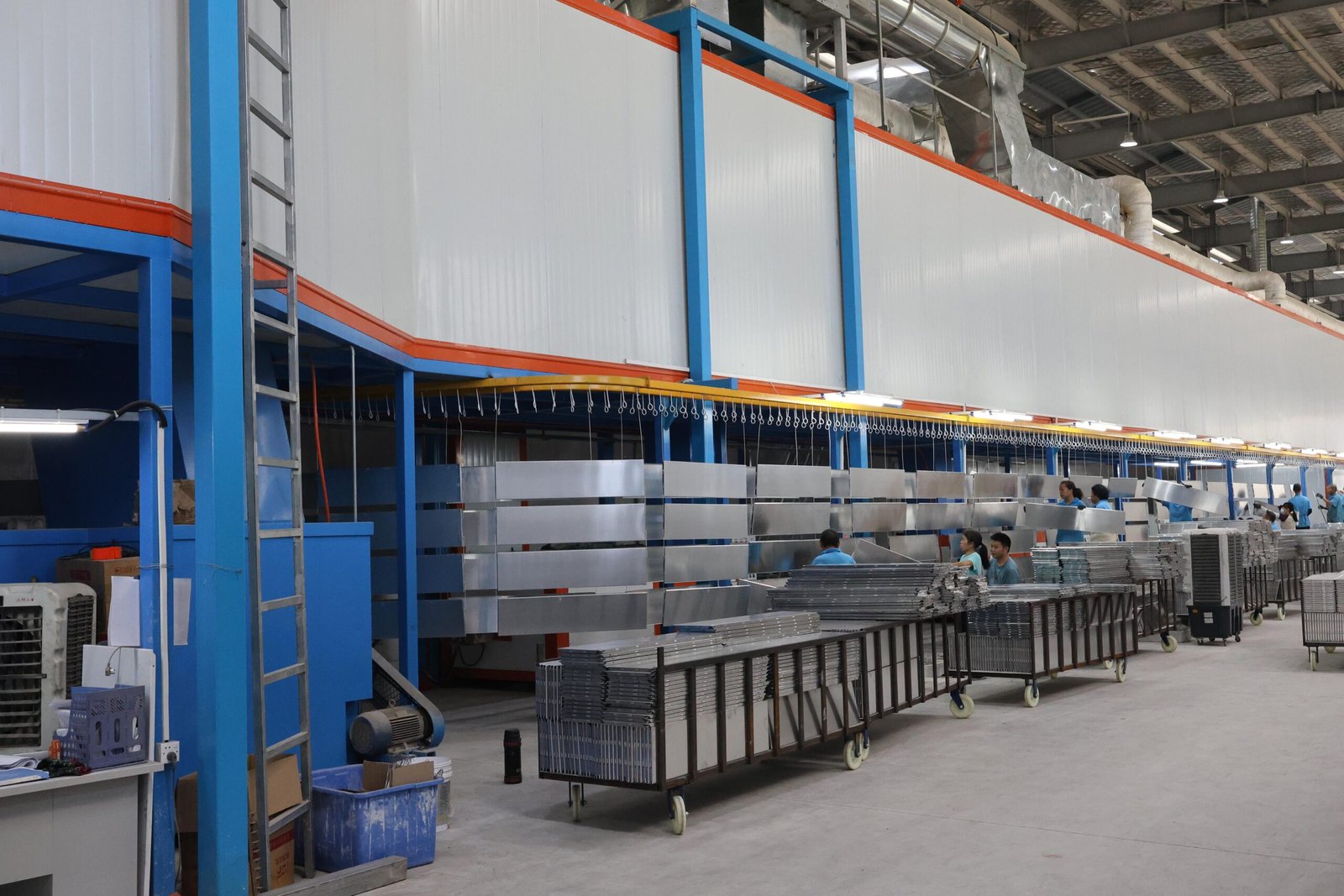How Does a Conveyor System Enhance Productivity in a Powder Coating Line?

Manufacturing lines often stall or slow down due to inconsistent movement—but conveyor systems solve that problem fast.
Conveyor systems automate and streamline material movement in powder coating lines, improving workflow, reducing errors, cutting labor costs, and ensuring better product quality and safety.
Let’s break down how conveyor systems bring order, speed, and efficiency to every step of the powder coating process.
Why is streamlined material handling important?

Lifting, carrying, and repositioning parts manually slows everything down.
Conveyor systems automate the transfer of parts, reducing human handling, minimizing damage, and speeding up the process.
Here’s how automation improves handling:
| Factor | Manual Handling | Conveyor System |
|---|---|---|
| Speed | Slower, inconsistent | Continuous, automated |
| Damage Risk | High due to handling | Low, consistent movement |
| Labor Involvement | High | Minimal |
With conveyors, we move parts directly through cleaning, coating, and curing stages without delays.
How does a conveyor system ensure a consistent workflow?
When production stops, so does productivity.
Conveyor systems provide a continuous, reliable flow of parts—eliminating downtime, bottlenecks, and manual delays.
This consistency means:
- No waiting between stages
- Better planning and scheduling
- Reliable throughput across shifts
By running smoothly all day, conveyors keep your powder coating line in rhythm and your output predictable.
How does it improve coating quality?
A finish is only as good as its consistency.
By moving parts at a steady speed and angle, conveyor systems allow for even powder application and predictable curing.
Manual systems can cause:
- Uneven application
- Missed spots
- Over- or under-curing
Automated conveyors eliminate these issues by aligning perfectly with your powder guns and ovens. The result? A smoother, longer-lasting finish.
Can conveyor systems reduce labor costs?
Fewer hands moving parts means more savings on payroll.
Conveyor systems replace repetitive manual tasks, letting your team focus on quality control, setup, and higher-skill operations.
By reducing the number of workers needed for movement, you cut:
- Direct labor expenses
- Costs related to injuries or fatigue
- Training and turnover costs
We’ve seen shops reduce labor by 20–30% after installing conveyors.
Are conveyor systems safer?
Less lifting means fewer back injuries.
By handling heavy or awkward items automatically, conveyor systems reduce physical strain and injury risks.
Added safety benefits include:
- Emergency stop buttons
- Sensor-triggered shutoffs
- Fewer people working near moving machinery
You protect your team—and avoid costly downtime or compensation claims.
How do conveyors help optimize space?
More production doesn’t mean more floor space.
Conveyor systems can be customized to move parts overhead or along tight paths, making better use of your facility.
That means:
- Higher production without expanding your building
- Neater layouts with fewer carts or clutter
- Integration with ovens, booths, and cooling zones
Smart layout planning lets you grow your output without growing your footprint.
What about flexibility and future scaling?
Today it’s small batches—tomorrow it’s full production.
Conveyor systems are modular and adaptable, making it easy to expand or reconfigure your line.
You can adjust:
- Speed for different coatings
- Height or angle for new parts
- Routes for added processes or capacity
This flexibility is key in industries where orders change or product lines evolve.
Can it help reduce contamination?
Dust and debris ruin finishes.
Conveyor systems can be enclosed or sealed to minimize powder contamination, keeping parts clean from start to finish.
Other contamination controls:
- Automatic cleaning of hangers and hooks
- Reduced manual contact with coated parts
- Designated clean zones in the process flow
Clean handling means fewer rejects and less rework.
What about real-time control and monitoring?
You can't fix what you can't measure.
Conveyors equipped with sensors and smart controls give real-time feedback on cycle times, part position, and speed.
That allows you to:
- Adjust coating or curing on the fly
- Spot slowdowns before they become breakdowns
- Track every part through the line
This visibility lets you keep things on track—and improve as you go.
Do conveyor systems save energy?
Yes, they move smart—so your whole line runs lean.
Conveyors reduce wasted motion and optimize oven cycles by delivering parts at steady intervals.
Here’s how they save energy:
- Less idle time at each stage
- Shorter heating cycles thanks to steady throughput
- No over-processing of slower parts
By keeping the line balanced, you keep your energy costs down.
Conclusion
Adding a conveyor system to a powder coating line isn’t just about automation—it’s about smarter, safer, and faster production. From handling to quality to energy savings, conveyors unlock real efficiency.
